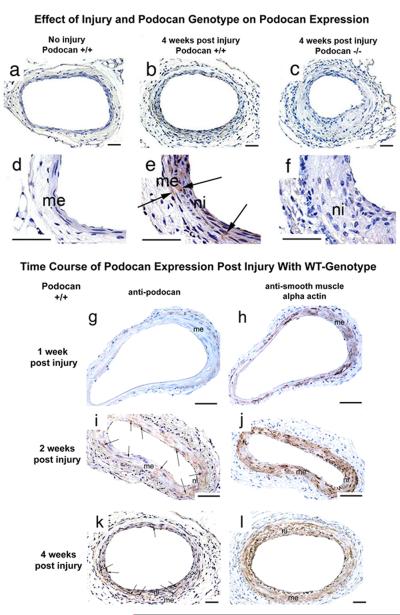Figure 1.
Effect of injury and podocan genotype on arterial podocan expression. (a and d): Podocan is not detected in non-injured wild type femoral arteries, x200, x1000; scale bar=50 μm. (b and e): After injury brown labeling (arrows) for podocan is clearly seen in media (me) and neointima (ni) of wild type arteries at 4 weeks; x200, x1000; scale bar=50 μm. (c and f): After injury an artery with podocan−/− genotype exhibits a large neointima (ni) and shows, as expected, no podocan labeling serving as negative control for podocan immunostaining; x200, x1000; scale bar=50 μm. Time course of podocan expression post injury in wild type artery: 1 week (g-h): At 1 week after injury podocan is hardly detectable in the media (me) while alpha-actin is expressed strongly. x200; scale bar=50 μm. 2 weeks (i-j): Much stronger, albeit patchy, medial (me) podocan expression appears (arrows). Of note, podocan is also seen in early neointima (ni), x200; scale bar=50 μm. 4 weeks (k-l): Podocan expression (arrows) remains strong in neointima and media in close spatial association with alpha-actin signals, x200; scale bar=50 μm.

